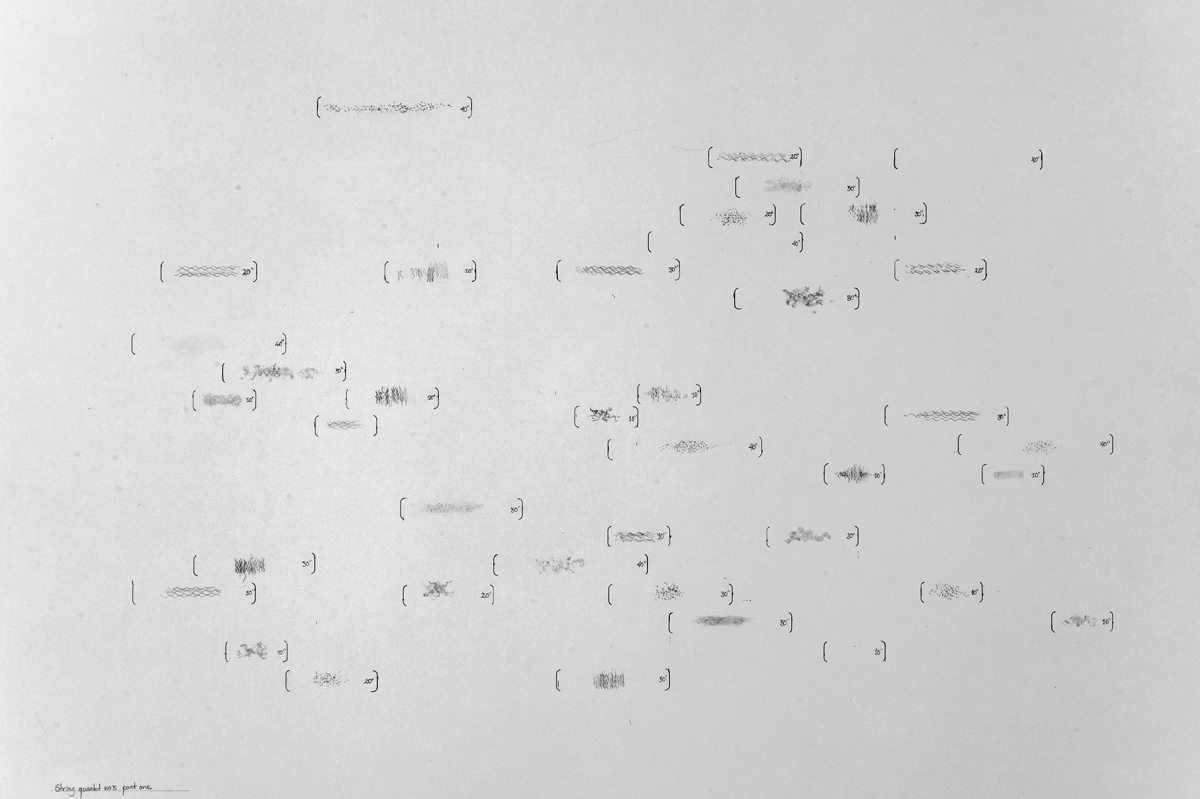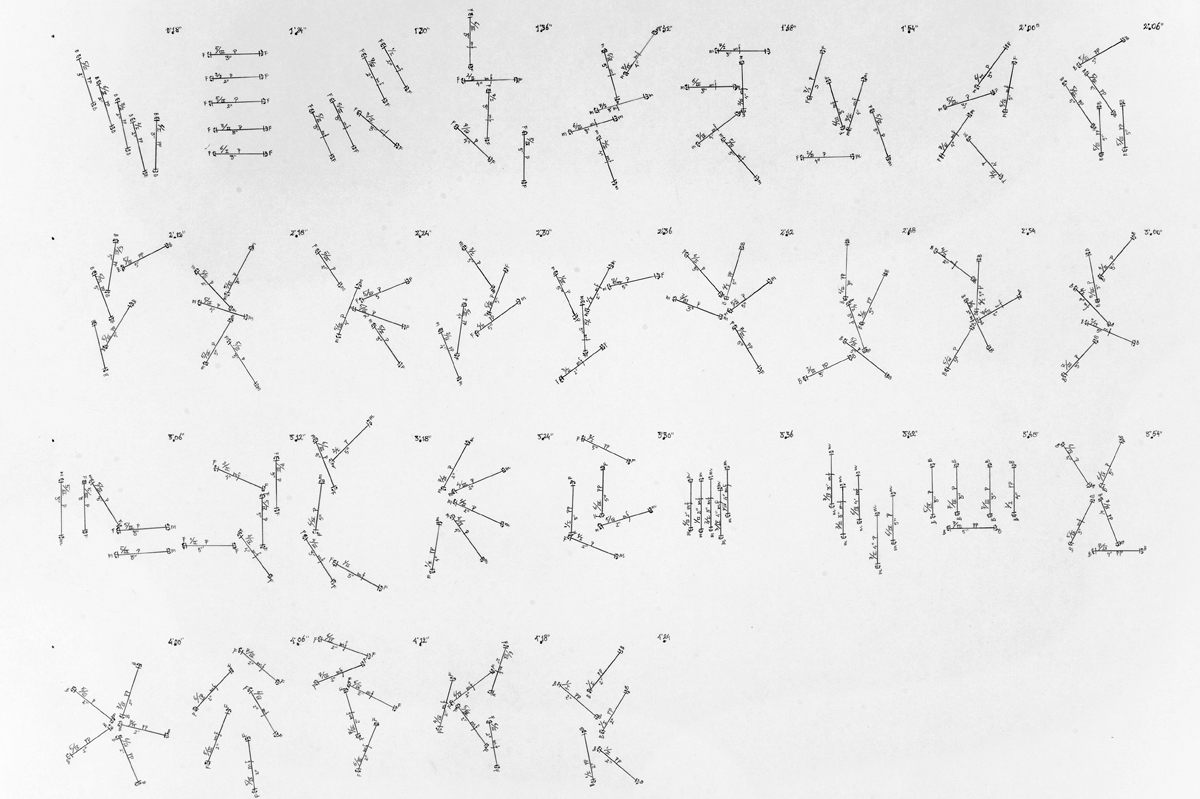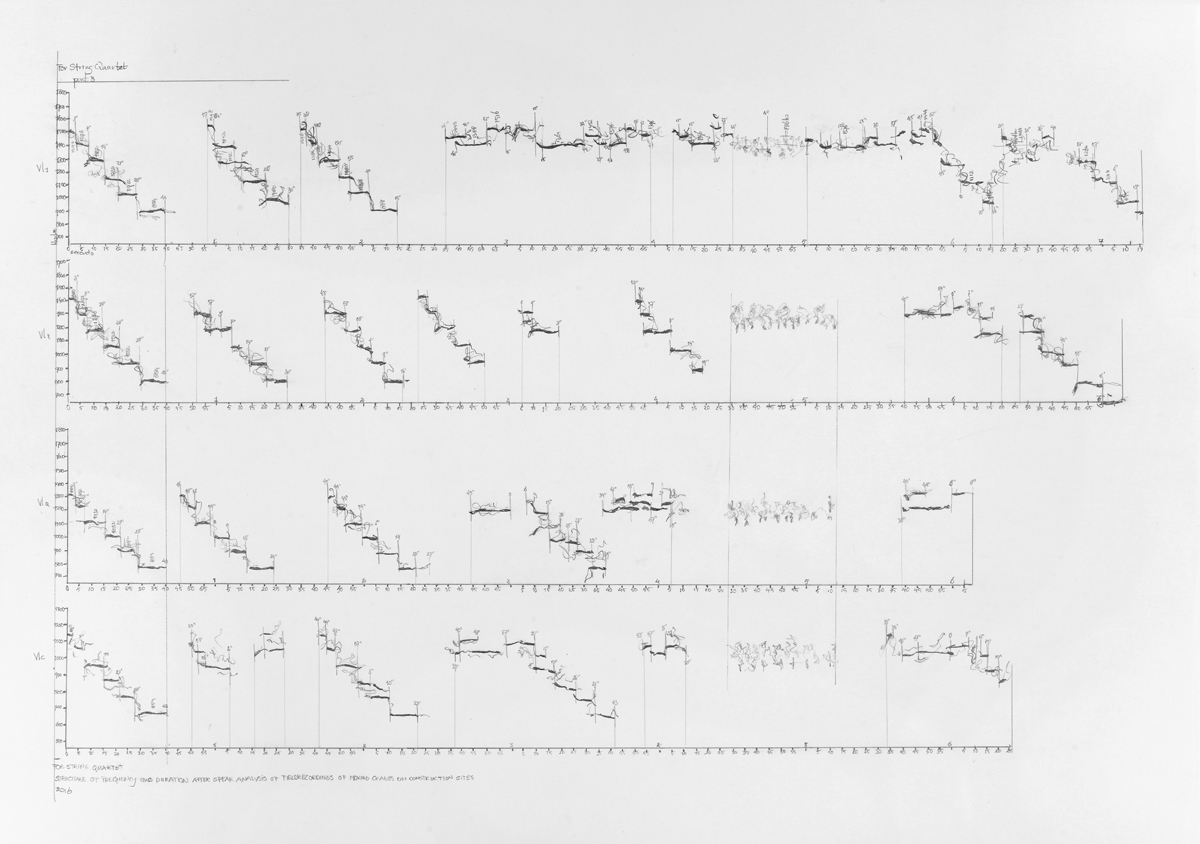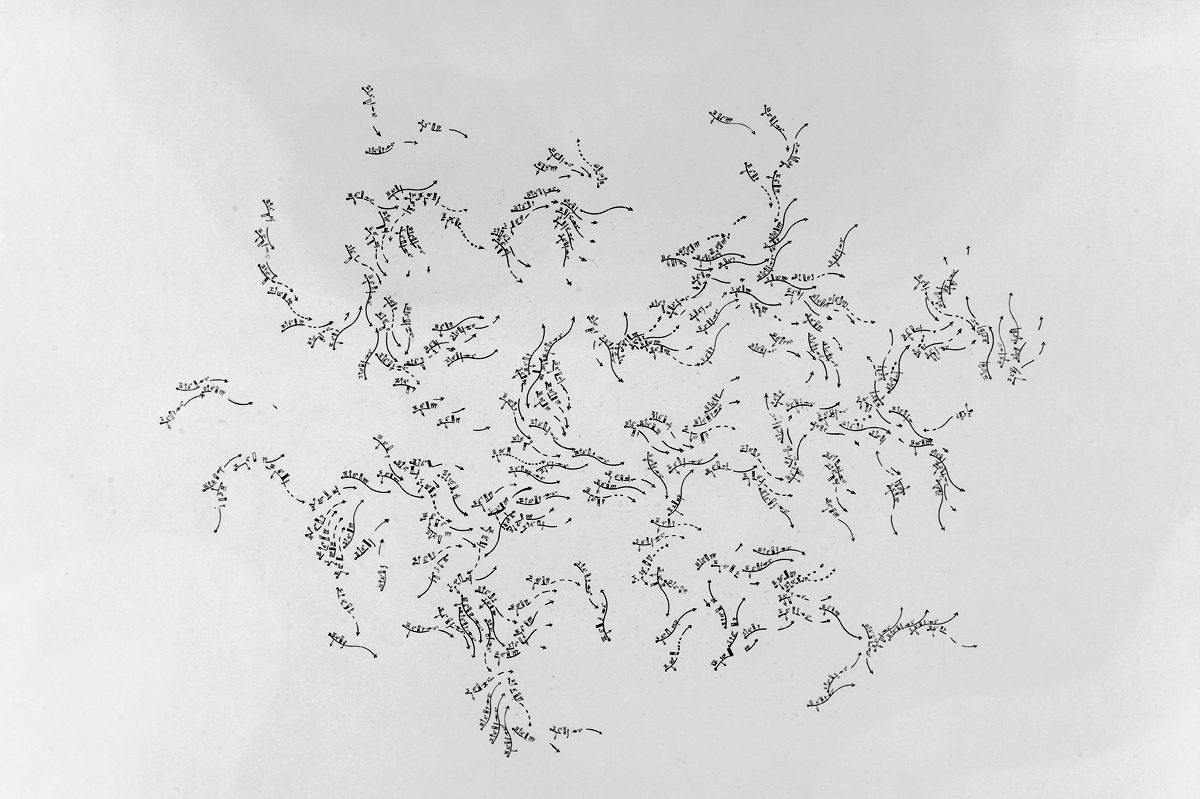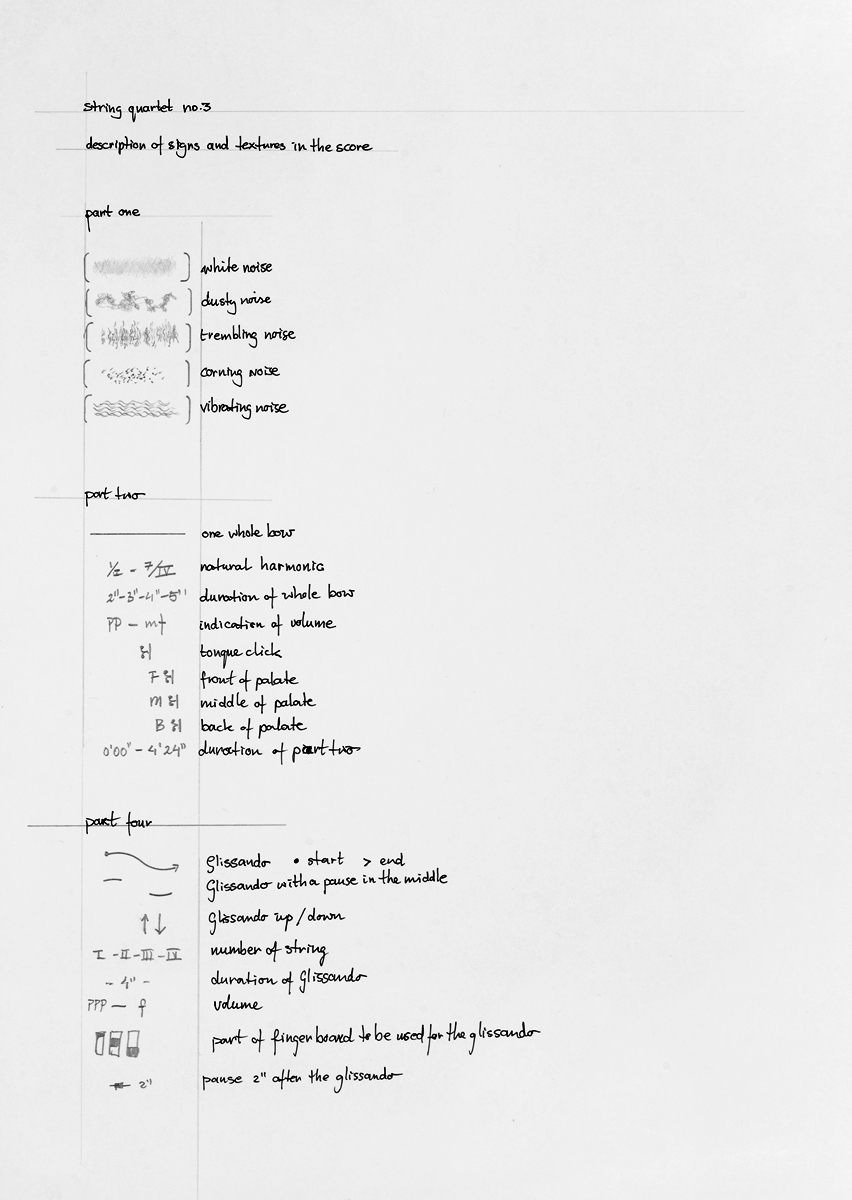String Quartet no.3
Part one
4 minutes and 20 seconds
Part one is structured by layering 5 different textures of noise with 4 different durations.
Each musician individually navigates through the graphical score and determines the order of the textures to play. The duration is indicated in the time brackets. As many brackets are chosen as required to play an overall duration of at least 4 minutes and 20 seconds.
All musicians simultaneously start and end together.
There is no pause between the production of the different noises.
There is no change of expression within the duration of each bracket.
Part one is played softly. The differences in volume occur naturally due to the different textures of the noise.
All musicians choose an individual interpretation of the textures.
Different noises:
1. white noise
2. dusty noise
3. trembling noise
4. corning noise
5. vibrating noise
Part two
4 minutes and 20 seconds
Part two is built up from the natural harmonics produced from 7 different positions of the 4 strings and 3 different kinds of tongue clicks. The score of part two consists of 44 figures.
Each figure contains 5 lines. Each line represents one single, full-length bow stroke.
Above each line the natural harmonic, string, volume, duration and tongue click are notated.
Each line starts and ends with one of the 3 possible tongue clicks.
Each musician chooses one line out of each figure.
When the duration of the bow stroke is indicated as less than 5 seconds, the bow "freezes" until the 5th second, and all musicians move in unison towards a new bow stroke. A new bow always starts at the frog.
All musicians start in unison with each new bow stroke. Each new bow begins in a sequence of 6 seconds, as indicated in the score.
Each beginning and end of a bow is accentuated with a tongue click.
The beginning of the bow starts with a tongue click in unison.
There should be no pause between the tongue click and the beginning and end of the bow.
Part three
7 minutes and 12 seconds
The score for this part is an audio file.
Each musician receives a different audio file.
The file consists of filtered and analyzed field recordings of sound and melodies made by cranes transporting material on construction sites. On paper, a graph indicates the frequencies and durations of the sounds recorded and also shows the superimposition of each instrument in the composition for a quartet. The musician is asked to imitate the sounds heard in the recording and follow the duration as precisely as possible.
Part four
4 minutes and 20 seconds
Part four is played using glissandi, in different lengths, durations, speeds, volumes and on different parts of the finger board.
A broken line indicates an interrupted glissando, bowed continuously. The tone at the point of the stop is sustained until the glissando continues. The longer the broken part of the line, the longer a single tone is sustained. The position of the broken part of the line roughly indicates the point in time.
Each musician chooses from the graphical score her/his order of glissandi. Choose as many as required to play at least 4 minutes and 20 seconds. You likely need to choose at least 30. You are not obliged to choose 30 different lines. You can choose the same line as many times as you want. The chosen glissandi don't have to lie next to each other in the score. The score has no reading direction.
The piece has a structured pulse of 2 seconds. If you need or want to build in a pause, start a new glissando on an even number in time. The pause can be as long as you want.

